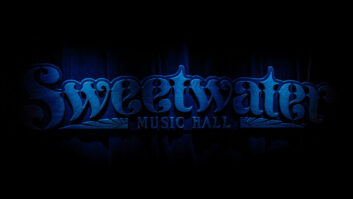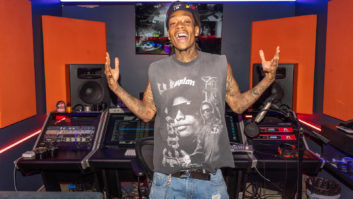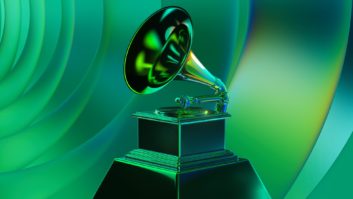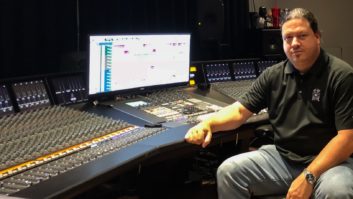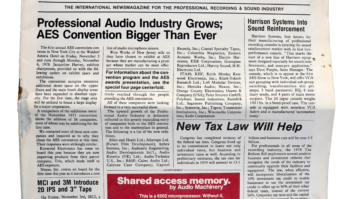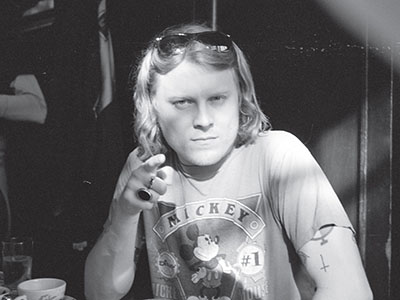
There’s an entertaining video online labeled, “Watch Ty Segall and Steve Albini randomly smash a toilet into pieces.” Turns out, it was not so random. The footage was captured during sessions for Segall’s eponymous new album, recorded in Albini’s studio, Electrical Audio, in Chicago.
“There was a song that was intended to have a… I don’t know if you would call it a psychedelic interlude, but it was a nonmusical interlude right in the middle,” Albini explains. “And that nonmusical interlude was going to involve some found sounds and some created sounds; that was like a whole separate little project within the project. Smashing the toilet was in service of that psychedelic moment.”
Moments like that are inspiring in their own way, but rest assured, the punk-prog-psychedelic album Ty Segall (Drag City) is eminently musical—full of Segall’s powerful vocal harmonies and magnificent guitar fuzz.
Tracking sessions took place during several days at Albini’s place, with basics going down live and, Segall says, requiring the fewest overdubs he’s ever needed on a project. “If you want your band to sound how they actually sound, [Albini] is the most perfect match you could ask for,” Segall says. “He’s hands off when the band wants him to be, but when he did throw in ideas, they were always amazing.”
“The live band Ty has been playing with for a while wanted to play as they’d been playing live, as much as possible, and that naturally suits the way I work, so it was fun and easy,” Albini says.
Segall and guitarist Emmett Kelly, and their amps, were set up in the main studio, while bassist Mikal Cronin was situated in what Segall calls the “most dead” room in the studio, and drummer Charles Moothart played in Albini’s drum room. Windows and room positioning in Electrical Audio allowed all of the band-members to make eye contact.
Segall plays through a silver-face ’72 Fender Quad Reverb that he once told our sister magazine Electronic Musician is “broken—it breaks up way too much. It’s way too distorted… but it’s my lucky amp.“
Apparently, that luck only increased on Albini’s watch: “No one has ever gotten my guitar amp to sound that good,” Segall says. “I’ve never found an amp that topped it, but Steve made it sing.”

Albini says he put up three mics to capture Segall’s guitar: One was an RCA 74. “That is sometimes called the Junior Velocity microphone,” Albini says. “It’s like a tiny version of a 44. It was originally used as an announcer’s mic, so it has a presence rise; it has a coil in it that creates a slope and a slight rise in high frequencies, which makes it really good for electric guitar.”
Albini also put up an AEA N8 that he says he’s been using a lot on electric guitars since he received an early prototype. Both close mics were centered on loudspeaker cones, approximately 12 to 14 inches from the grille. He also uses a distant ambient mic—in this case, a Crown PCC. “It’s a small, flat plate that sits on the floor and picks up the sound of the room,” Albini says. That mic was also on hand when they overdubbed Segall’s vocals..
Segall sang in the middle of the live room, into a Shure SM7 and RCA 44. “I’m fairly sure I would have used the mic preamps that our chief technician Greg Norman makes,” Albini says. “They’re called the EAPreQ; the Q is because there’s a simple high- and lowpass shelving EQ built into the preamp.”
Albini says his compressor/limiter would have been a UREI 1176 or dbx 165. “And most of the time, for guys who are very demonstrative as singers, I use an ambient microphone in the singing room, as well, so that would have been the Crown PCC again; that ambient microphone is often set up on an expander so when he’s singing quietly it doesn’t add room noise, but when he sings more loudly, it opens up and you can hear it kick in.”
